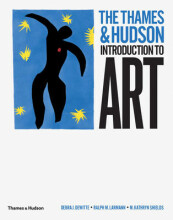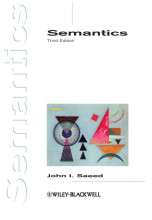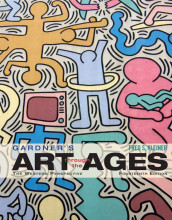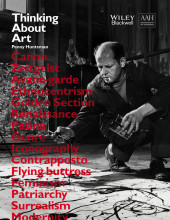Summary: The Thames & Hudson Introduction To Art | 9780500239438 | Debra J Dewitte, et al
- This + 400k other summaries
- A unique study and practice tool
- Never study anything twice again
- Get the grades you hope for
- 100% sure, 100% understanding
Read the summary and the most important questions on The Thames & Hudson Introduction To Art | 9780500239438 | Debra J. Dewitte, Ralph M. Larmann & M. Kathryn Shelds
-
1 Fundamentals
-
1.1.1 Line
This is a preview. There are 1 more flashcards available for chapter 1.1.1
Show more cards here -
How can the term "line" be defined" and what are they used for?
Simply put: "Line is a tool for describing, in a simple way and in two dimensions, the boundaries and edges of three dimensions."
A line functions as a mark, either connecting two points, determining a shape's outlineor defining the boundaries between planes (layers) in a two-dimensional work. Another function they have is telling the viewer where to look in a work of art. Lines are also used to convey a sense of movement. -
What could lines express?
For one, they can be used to regulate and control, if they are clear and well-defined. On the other hand, they can express freedom and passion if they are more irregular, as if they come straight from the depths of the mind of their creator, which can be seen in scribbles for example. -
What is a directional line?
A line that makes us focus on something that we should notice by redirecting the viewer's gaze. -
What is a contour line?
An outer edge of an object, that suggests volume in space even when there is none. These are about change and don't necessarily need to be very well-defined. -
What are communicative lines?
Lines that are meant to convey certain feelings and emotions. Diagonals, for one, represent speed and athleticism, verticals strength and horizontals peace. This is used in logos, in which certain responses are very important to their success. -
1.1.2 Shape
This is a preview. There are 1 more flashcards available for chapter 1.1.2
Show more cards here -
What is a shape?
A two-dimensional area of which the boundaries are defined by lines or suggested by changes in colour or value. -
What are geometric shapes?
Shapes that are composed of regular lines and curves, like a triangle or a square. It is mathematically regular and precise. These can be plotted. -
What are organic shapes?
Shapes that are composed of irregular, unpredictable lines, like the ones found in the natural world (the "organic" world). -
1.1.3 Contrast
-
What is the principle of contrast?
The application of two greatly different states of an element. Examples:
- regular and irregular lines
- geometric and organic shapes -
What are positive and negative shapes?
Positive shapes are supported by a negative background, which is contrasting and makes them stand out. Black and white are the most common examples for this. However, the negative shapes can have a meaning of their own, like the arrow in the Fed-Ex logo.
- Higher grades + faster learning
- Never study anything twice
- 100% sure, 100% understanding
Topics related to Summary: The Thames & Hudson Introduction To Art
-
Fundamentals - Three-Dimensional Art: Form, Value, Mass and Texture - Form
-
Fundamentals - Three-Dimensional Art: Form, Value, Mass and Texture - Form in Relief and in the Round
-
Fundamentals - Three-Dimensional Art: Form, Value, Mass and Texture - Volume
-
Fundamentals - Implied Depth: Value and Space - Perspective
-
Fundamentals - Colour - Colour Schemes
-
Fundamentals - Colour - Our Perception of Colour
-
Fundamentals - Colour - Colour in Design
-
Fundamentals - Time and Motion - Motion
-
Fundamentals - Unity, Variety and Balance - Balance
-
Fundamentals - Scale and Proportion - Scale
-
Fundamentals - Scale and Proportion - Proportion
-
Fundamentals - Emphasis and Focal Point
-
Fundamentals - Pattern and Rhythm - Pattern
-
Fundamentals - Pattern and Rhythm - Rhythm
-
Fundamentals - Content and Analysis - Content
-
Media and Processes - Drawing - The Materials of Drawing: Dry Media
-
Media and Processes - Drawing - Paper
-
Media and Processes - Painting
-
Media and Processes - Printmaking
-
Media and Processes - Visual Communication Design - The Early History of Graphic Arts
-
Media and Processes - Visual Communication Design - Graphic Design
-
Media and Processes - Photography - Recording the Image
-
Media and Processes - Photography - The History of Photography
-
Media and Processes - Photography - The Art of Photography
-
Media and Processes - Sculpture - Approaches to Three Dimensions in Sculpture
-
Media and Processes - Sculpture - Methods of Sculpture
-
History and Context - Art of the Middle Ages - Art of Late Antiquity
-
History and Context - Art of the Middle Ages - Byzantine Art
-
History and Context - Art of the Middle Ages - Manuscripts of the Middle Ages
-
History and Context - Art of Renaissance and Baroque Europe (1400-1750)































